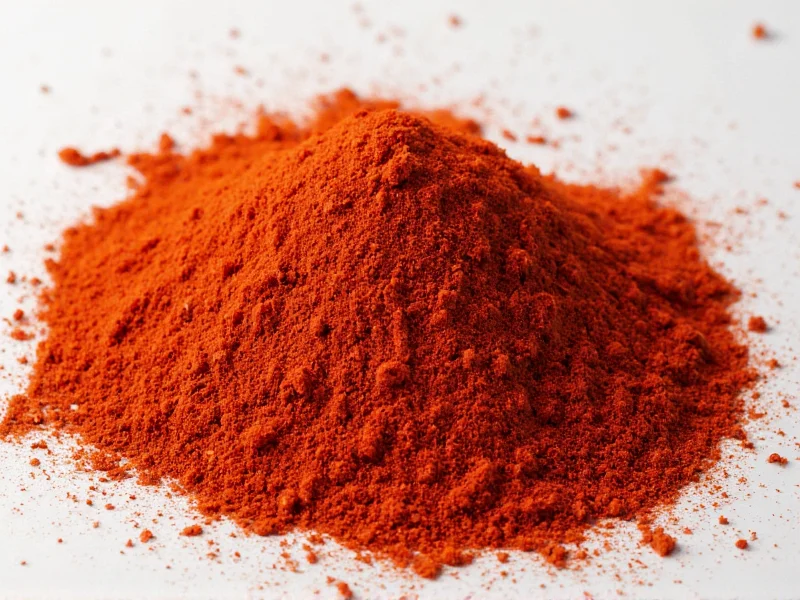Understanding chili pepper heat levels is essential for both culinary enthusiasts and casual cooks. The Scoville scale, developed by pharmacist Wilbur Scoville in 1912, remains the standard measurement for quantifying the pungency or spiciness of chili peppers and other spicy foods. This comprehensive guide explains how heat levels work, provides reference values for common varieties, and offers practical advice for using chilies safely in your cooking.
The Science Behind Chili Heat
Chili heat comes from capsaicinoids, primarily capsaicin, which activate TRPV1 receptors in your mouth and skin that detect heat and pain. The concentration of these compounds determines a pepper's position on the Scoville scale. Modern testing uses high-performance liquid chromatography (HPLC) to measure capsaicin concentration precisely, then converts these measurements to Scoville Heat Units for consumer understanding.
Scoville Scale Explained
The original Scoville Organoleptic Test involved diluting chili extract in sugar water until the heat was no longer detectable by a panel of tasters. The degree of dilution determined the Scoville rating. While laboratory methods have replaced this subjective approach, the Scoville scale remains the consumer-friendly reference.
| Heat Level | Scoville Range (SHU) | Human Perception |
|---|---|---|
| Mild | 0-1,000 | No detectable heat |
| Medium | 1,000-15,000 | Mild warmth, pleasant flavor |
| Hot | 15,000-50,000 | Significant heat, requires caution |
| Very Hot | 50,000-100,000 | Intense heat, limited culinary use |
| Extreme | 100,000+ | Painful, primarily for challenges |
Common Chili Varieties and Their Heat Levels
When selecting chilies for cooking, understanding the specific heat range of each variety helps prevent unexpected results. Note that heat can vary significantly within the same pepper type due to growing conditions, soil composition, and climate factors.
| Chili Variety | Scoville Range (SHU) | Common Culinary Uses |
|---|---|---|
| Bell Pepper | 0 | Salads, stuffed peppers, raw applications |
| Poblano | 1,000-2,000 | Rajas, chiles rellenos, mole sauces |
| Jalapeño | 2,500-8,000 | Salsas, nachos, pickled peppers |
| Serrano | 10,000-23,000 | Pico de gallo, hot sauces, guacamole |
| Cayenne | 30,000-50,000 | Spice blends, hot sauces, seasoning |
| Habanero | 100,000-350,000 | Caribbean sauces, hot condiments |
| Ghost Pepper | 855,000-1,041,427 | Extreme hot sauces, challenges |
| Carolina Reaper | 1,400,000-2,200,000 | World record hot sauces, novelty items |
Factors Affecting Chili Heat Perception
Several elements influence how heat registers when consuming chilies:
- Individual tolerance: Regular chili consumers develop higher tolerance over time
- Fat content: Dairy products like milk or yogurt neutralize capsaicin better than water
- Pepper maturity: Riper chilies often contain more capsaicin
- Plant stress: Drought conditions can increase capsaicin production
- Part of the pepper: Seeds and white membranes contain the highest concentration
Practical Tips for Cooking with Chilies
Understanding chili pepper heat levels helps you create balanced dishes without overwhelming spice. When working with hot chilies:
- Always wear gloves when handling extremely hot varieties like ghost peppers or Carolina Reapers
- Remove seeds and white membranes to reduce heat intensity by up to 80%
- Add chilies early in cooking for milder heat distribution, or later for sharper spice
- Start with small amounts and taste as you go—heat compounds intensify during cooking
- Keep dairy products nearby to counteract excessive heat
Common Misconceptions About Chili Heat
Several myths persist about determining chili pepper heat levels. Size doesn't reliably indicate heat—smaller chilies like bird's eye can be hotter than larger habaneros. Color also doesn't determine heat level, though ripeness often correlates with increased capsaicin. The belief that spiciness comes primarily from seeds is inaccurate; the highest concentration of capsaicin exists in the placental tissue (white membranes) connecting the seeds to the flesh.
Measuring Heat in Commercial Products
When purchasing hot sauces or processed chili products, check for Scoville ratings on packaging. Reputable manufacturers often provide this information. Be cautious with products that claim "X times hotter than habanero" without specific measurements, as these marketing claims can be misleading. Understanding commercial chili heat measurements helps you select products matching your tolerance level.
Regional Variations in Heat Tolerance
Cultural differences significantly impact how chili heat levels are perceived and utilized. Thai cuisine regularly features bird's eye chilies (50,000-100,000 SHU) as standard ingredients, while many Western cuisines consider jalapeños (2,500-8,000 SHU) quite spicy. When adapting recipes from different culinary traditions, consider these cultural context differences in chili pepper heat expectations.
What's the difference between Scoville units and SHU?
Scoville units and SHU (Scoville Heat Units) refer to the same measurement system. SHU is simply the abbreviated form commonly used when discussing chili pepper heat levels. Both terms quantify the concentration of capsaicinoids that produce the sensation of heat.
Can cooking reduce chili pepper heat levels?
Cooking can slightly reduce perceived heat as capsaicin breaks down at high temperatures, but the effect is minimal. More effective methods for reducing heat include removing seeds and membranes before cooking, or adding dairy, sugar, or acid to counteract the spiciness in finished dishes.
Why do some jalapeños taste hotter than others?
Jalapeño heat varies due to growing conditions, soil composition, water stress, and maturity at harvest. Two jalapeños from the same plant can differ significantly in heat. This natural variation explains why you might experience unexpectedly mild or hot jalapeños even when purchasing from the same source.
How do I build tolerance to spicy foods?
Building chili pepper heat tolerance requires gradual exposure. Start with milder varieties like poblanos, then slowly introduce progressively hotter peppers. Regular consumption helps your pain receptors adapt. Pairing spicy foods with dairy products during the acclimation process can make the transition more comfortable while your tolerance develops.
What's the mildest chili pepper commonly available?
Bell peppers are completely mild at 0 SHU, but among hot chili varieties, poblano peppers (1,000-2,000 SHU) are generally considered the mildest commonly available option in most grocery stores. Anaheim peppers (500-2,500 SHU) also provide very mild heat suitable for those sensitive to spice.











 浙公网安备
33010002000092号
浙公网安备
33010002000092号 浙B2-20120091-4
浙B2-20120091-4